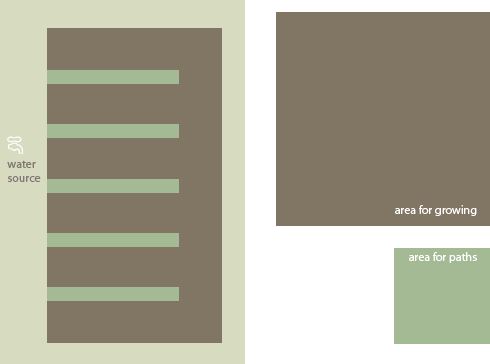


















 1
1





Treehugger Organic Farms
 1
1





Idle dreamer








Idle dreamer




Yes and no; it completely depends on the micro-climates you are trying to create. With a design like this you can create different micro-climates in every bed, or you can repeat them to gain more production and ease of harvesting.Kelly Rued wrote:I pictured keyholes as having tall rear ends and increasingly shorter plantings as you move toward the light source on the open end. Is that how those beds look when the trellis/plantings are at peak size?
Tyler Ludens wrote:The main idea of the keyhole shape is to use the least amount of space for paths. There's no rule says you have to plant them a certain way. You can plant them however you want.
Treehugger Organic Farms




Brenda
Bloom where you are planted.
http://restfultrailsfoodforestgarden.blogspot.com/








Ben Stallings wrote:When planning keyholes for a large bed, I like to alternate sides so that one sinuous bed is created (without branches) that can be watered with a single soaker hose. That greatly simplifies your irrigation infrastructure and allows you to use the cheap recycled-rubber soaker hoses that work fine with very low water pressure. Putting the paths on contour can also be a lazy way to create bioswales without extra digging.
I spend a lot of time doodling keyhole designs for various shapes of beds during boring meetings, etc., and I developed the following methodology for large areas that are accessible all around the outside:
1. Determine your standard reach. Most designs use a reach of 24" which results in 48" wide beds, but if your clients include children, etc. the reach may be different.
2. Find the least accessible point in the bed, usually the middle.
3. Find the point in the perimeter closest to the least accessible point.
4. The first path goes from this point in the perimeter, through the least accessible point, continuing to 48" (2*reach) from the other edge.
5. Starting from the opposite side of the bed, make the second and third paths 48" (2* reach) from the first path. Continue working out from the middle until the whole bed is accessible.
If there's another methodology that results in less path area than this one, I'd love to hear it!












Alex Ames wrote:Use of edge incorporating a small herb spiral into a flower bed which weaves it's way across my back yard.
I have tried to attach a photo but not sure if it took.
























